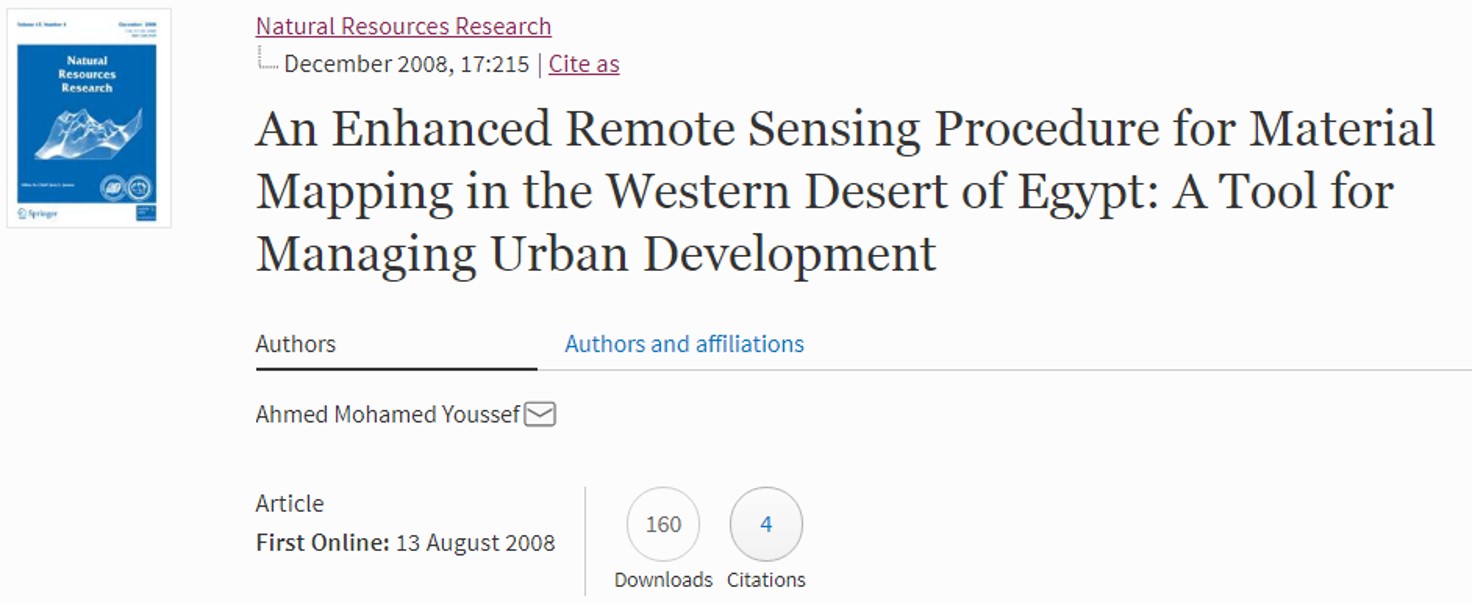Recently, both the Egyptian government and private sector have been interested in developing low desert zone areas. The low desert zones are located between the recent Nile flood plain and the limestone plateau, from the east and west sides, and represent an important source of aggregate materials. The development of these areas, however, will reduce the supply of aggregate materials so that new sources must be identified. This study describes several processing methods, applied to a Landsat Enhanced Thematic Mapper Plus image of 2001, to develop a reliable method to map the aggregate materials. By using different enhancement techniques with the help of a supervised classification method, it was found that decorrelation stretch and principal component analysis are the most suitable methods to discriminate between different types of aggregates, as well as to isolate these aggregates from the surrounding materials. Field and laboratory investigations indicated that two types of aggregates were recognized, confirming the remote sensing findings.


